Thirty-six years ago, we moved from the Upper West Side of Manhattan to Craryville, a small town in New York's Hudson Valley. Craryville consisted of a blinking light at its crossroads (or maybe it was just a stop sign...I forget), a post office, a fire station (where the town's annual Halloween party was held and where, I kid you not, I once took a belly dancing class), a gas station, a pizza joint, a coffee shop, and Random Harvest, an absolutely perfect farm stand/shop that had not yet evolved into the gourmet cheese, olive oil and $8 a pint ice cream boutique that would follow the influx of "City People" into the area (I conveniently ignored the fact that we were the self-same city people who were already driving up prices, so the local kids could not afford to buy houses in their hometowns when they grew up and started their own families).
And, oh yes, there was also Rogers Book Barn, down a back road and actually just over the border in Hillsdale, which bought and sold used books, and provided a "random harvest" all its own: I once walked in with a carton of books to sell and walked out with a sweet little black puppy of random parentage whom we named Maxine.
Anyway, after the disaster that was my first attempt at gardening (see last column, "It's a Miracle"), Random Harvest became my home away from home. First of all, I loved the name, which was taken from a 1942 weepy (based on a James Hilton novel) starring Ronald Coleman and Greer Garson about a soldier in World War I who loses his memory as a result of a head injury; meets, falls in love with, marries and has a baby with a beautiful show girl (yes, in that order...it was made in 1942), then gets hit by a car and regains his memory of his pre-war life, as a scion of a wealthy family, but loses all cognizance of his idyllic recent life with Greer. I won't spoil the ending for you because you know that you want to go right to Netflix and download it, right? (or, if you are lucky enough to live in a place that still has a video store run by a classic movie buff...as I do..you're going to run out and rent it, right? I am seriously going to rent it, as soon as the store opens this morning...well, actually, they don't open until noon...because I haven't seen that movie in about 40 years and I could use a good tear jerker that is not rated PG. The only movies I saw all summer were Finding Dory and Pete's Dragon, because our adorable grandsons spent several weeks with us. Not that I am complaining, but sometimes you just want to watch something that is not Disney or Pixar).
But I digress. Random Harvest (the farm stand, not the movie...although I think Greer and Ronald gardened at their lovely cottage in the English countryside where they almost lived happily ever after) grew most of their own produce and sold the bounty from other local farms, as well. It also provided the first summer employment for both of my kids, helping to instill a work ethic in two teenagers who were loathe to lift a finger around the house.
So, now that I finally have the gardening thing kind of down ( only kind of, because just when you think you know what you are doing, nature decides to play tricks on you...like this year when there were virtually no blossoms on the fruit trees we planted on one side of the yard ...and thus no fruit...and I am waiting with baited breath for the THREE peaches on the tree to ripen so I can grab them before the birds and squirrels decide they want dessert), I have some random recipes to share from my own random harvest.
And it's random because, really, that's what's so surprising and delightful about a garden: This year, we have potatoes, onions, tomatoes, chard, collards and kale to feed an army, but only got six cucumbers and one or two scrawny heads of romaine; no fruit on the trees on one side of the house, but apple trees bent to the ground with the weight of their fruit on the other side of the house; wild blackberry canes surrounding the yard where they never appeared before, but only a handful of blueberries on the bushes I planted years ago.
Not to mention the scraggly patch of oregano that appeared uninvited right smack dab front and center of the perennial garden. I was all ready to rip it out and plant lovely pink fairy roses when the oregano flowered, bringing with it hundreds of bees just wallowing in those tiny white blossoms. So, of course the oregano (and our much-needed pollinator friends) stayed, at least for this season. And next year, I'll be planting that site with the bees in mind.
Hmmm, and maybe add some hives, as well?
And, oh yes, there was also Rogers Book Barn, down a back road and actually just over the border in Hillsdale, which bought and sold used books, and provided a "random harvest" all its own: I once walked in with a carton of books to sell and walked out with a sweet little black puppy of random parentage whom we named Maxine.
Anyway, after the disaster that was my first attempt at gardening (see last column, "It's a Miracle"), Random Harvest became my home away from home. First of all, I loved the name, which was taken from a 1942 weepy (based on a James Hilton novel) starring Ronald Coleman and Greer Garson about a soldier in World War I who loses his memory as a result of a head injury; meets, falls in love with, marries and has a baby with a beautiful show girl (yes, in that order...it was made in 1942), then gets hit by a car and regains his memory of his pre-war life, as a scion of a wealthy family, but loses all cognizance of his idyllic recent life with Greer. I won't spoil the ending for you because you know that you want to go right to Netflix and download it, right? (or, if you are lucky enough to live in a place that still has a video store run by a classic movie buff...as I do..you're going to run out and rent it, right? I am seriously going to rent it, as soon as the store opens this morning...well, actually, they don't open until noon...because I haven't seen that movie in about 40 years and I could use a good tear jerker that is not rated PG. The only movies I saw all summer were Finding Dory and Pete's Dragon, because our adorable grandsons spent several weeks with us. Not that I am complaining, but sometimes you just want to watch something that is not Disney or Pixar).
But I digress. Random Harvest (the farm stand, not the movie...although I think Greer and Ronald gardened at their lovely cottage in the English countryside where they almost lived happily ever after) grew most of their own produce and sold the bounty from other local farms, as well. It also provided the first summer employment for both of my kids, helping to instill a work ethic in two teenagers who were loathe to lift a finger around the house.
So, now that I finally have the gardening thing kind of down ( only kind of, because just when you think you know what you are doing, nature decides to play tricks on you...like this year when there were virtually no blossoms on the fruit trees we planted on one side of the yard ...and thus no fruit...and I am waiting with baited breath for the THREE peaches on the tree to ripen so I can grab them before the birds and squirrels decide they want dessert), I have some random recipes to share from my own random harvest.
And it's random because, really, that's what's so surprising and delightful about a garden: This year, we have potatoes, onions, tomatoes, chard, collards and kale to feed an army, but only got six cucumbers and one or two scrawny heads of romaine; no fruit on the trees on one side of the house, but apple trees bent to the ground with the weight of their fruit on the other side of the house; wild blackberry canes surrounding the yard where they never appeared before, but only a handful of blueberries on the bushes I planted years ago.
Not to mention the scraggly patch of oregano that appeared uninvited right smack dab front and center of the perennial garden. I was all ready to rip it out and plant lovely pink fairy roses when the oregano flowered, bringing with it hundreds of bees just wallowing in those tiny white blossoms. So, of course the oregano (and our much-needed pollinator friends) stayed, at least for this season. And next year, I'll be planting that site with the bees in mind.
Hmmm, and maybe add some hives, as well?
Tomato Jam
Makes two small jars
I'm not a jam lover, but this is a great way to use up ripe tomatoes that would otherwise go to the fruit flies.* It ends up being kind of like ketchup and delicious on burgers. It's also nice with a little Paleo cheese (see "It's a Miracle" post for Paleo feta recipe) on a Paleo-friendly cracker like Livin' Spoonful's Sourdough (www.livinspoonful.com) or Jilz Cracked Pepper and Sea Salt Crackerz, pictured (www.jilzglutenfree.com).
*Re: Fruit flies: My son-in-law showed me how to make a cheap, fool-proof fruit fly trap--put balsamic vinegar in a cup or small jar. Cover the top with plastic wrap and wrap it around the bottom so there is a tight seal. Poke holes in the top of the plastic wrap with a fork. The fruit flies will fly into the holes but won't be able to get out, and will drown in the vinegar. My Belgian pen pal says you can accomplish the same thing using sugar water.
*Re: Fruit flies: My son-in-law showed me how to make a cheap, fool-proof fruit fly trap--put balsamic vinegar in a cup or small jar. Cover the top with plastic wrap and wrap it around the bottom so there is a tight seal. Poke holes in the top of the plastic wrap with a fork. The fruit flies will fly into the holes but won't be able to get out, and will drown in the vinegar. My Belgian pen pal says you can accomplish the same thing using sugar water.
Ingredients
2 1/2 pounds ripe tomatoes, cored and chopped
3/4 cup coconut sugar
1/4 cup apple cider vinegar
1 tsp chopped fresh herbs like thyme or basil
Pinch red pepper flakes, optional
1. Put all ingredients into a saucepan and bring to a boil.
2. Immediately lower heat and simmer, stirring frequently, for 30 to 40 minutes, until mixture is thick.
3. Put in jars and refrigerate.
2 1/2 pounds ripe tomatoes, cored and chopped
3/4 cup coconut sugar
1/4 cup apple cider vinegar
1 tsp chopped fresh herbs like thyme or basil
Pinch red pepper flakes, optional
1. Put all ingredients into a saucepan and bring to a boil.
2. Immediately lower heat and simmer, stirring frequently, for 30 to 40 minutes, until mixture is thick.
3. Put in jars and refrigerate.
Blackberry/Peach Cobbler
4-6 servings
I am NOT going to use the only three fruits my peach tree produced this year in this cobbler. Those will be eaten out of hand, with the juice dribbling down our chins, unless the birds or the squirrels get them first, and then they will be mourned (the peaches, not the critters). Fortunately, the local farmers' market has plenty of lovely peaches. And I have been picking blackberries every day for the past week and there are still enough left for this yummy cobbler.
Ingredients
4 large peaches, sliced (I don't bother to peel them)
1 1/2 cups blackberries
4 TBS Ghee
3/4 cup coconut sugar
1 TBS arrowroot powder
1/4 tsp ground cardamom
3/4 cup blanched almond flour
1/4 cup coconut flour
1 tsp baking powder
1 can full-fat coconut milk
1. Preheat oven to 350 degrees
2. Melt 1 1/2 TBS ghee in a saucepan. Add peaches, blackberries, 1/4 cup coconut sugar, arrowroot, and cardamom, stir, and simmer for 10 minutes.
3. Combine remaining 1/2 cup coconut sugar, both flours, and baking powder in a bowl. Add the coconut milk and incorporate well.
4. Melt the rest of the ghee in a 9 x 13 inch baking pan, and carefully swirl it around so it coats the sides, as well.
5. Add the peach and berry mixture to the baking pan, then cover with batter.
6. Bake for about 30 minutes, or until brown. Serve warm.
4 large peaches, sliced (I don't bother to peel them)
1 1/2 cups blackberries
4 TBS Ghee
3/4 cup coconut sugar
1 TBS arrowroot powder
1/4 tsp ground cardamom
3/4 cup blanched almond flour
1/4 cup coconut flour
1 tsp baking powder
1 can full-fat coconut milk
1. Preheat oven to 350 degrees
2. Melt 1 1/2 TBS ghee in a saucepan. Add peaches, blackberries, 1/4 cup coconut sugar, arrowroot, and cardamom, stir, and simmer for 10 minutes.
3. Combine remaining 1/2 cup coconut sugar, both flours, and baking powder in a bowl. Add the coconut milk and incorporate well.
4. Melt the rest of the ghee in a 9 x 13 inch baking pan, and carefully swirl it around so it coats the sides, as well.
5. Add the peach and berry mixture to the baking pan, then cover with batter.
6. Bake for about 30 minutes, or until brown. Serve warm.
Sautéed Onions and Rainbow Chard
Serves 4
Rainbow chard is not only delicious, it's beautiful, too. The addition of water in this recipe (a hint from my Aunt Honey) allows you to use less oil than you would normally need to sauté the onions, and it tastes just as good.
Ingredients
1 bunch rainbow or Swiss chard, stems and ribs chopped, leaves sliced
1 large onion, peeled and thinly sliced
1- 2 TBS coconut oil
1/2 cup water
Salt and pepper to taste
1. Melt coconut oil in large, deep skillet
2. Add sliced onions and sauté until soft; add chopped chard stems and ribs and continue to sauté until onions are golden and stems soften.
3. Add water and continue to cook for a few minutes, then stir in sliced leaves.
4. Cook, covered until leaves are soft but still bright green, then remove cover and cook briefly until most of the liquid has evaporated. Season with salt and pepper.
1 bunch rainbow or Swiss chard, stems and ribs chopped, leaves sliced
1 large onion, peeled and thinly sliced
1- 2 TBS coconut oil
1/2 cup water
Salt and pepper to taste
1. Melt coconut oil in large, deep skillet
2. Add sliced onions and sauté until soft; add chopped chard stems and ribs and continue to sauté until onions are golden and stems soften.
3. Add water and continue to cook for a few minutes, then stir in sliced leaves.
4. Cook, covered until leaves are soft but still bright green, then remove cover and cook briefly until most of the liquid has evaporated. Season with salt and pepper.
Paleo Vichyssoise
Serves 6
The Paleo jury is kind of out on the question of eating potatoes. Some say o.k., some say absolutely not. I've substituted sweet potatoes and yams (both Paleo-friendly) in my diet for the past four years, but this year I grew potatoes in my garden for the first time, and I was not going to do all that work planting, hilling, hoeing, weeding, squishing potato beetles and scraping their eggs from the undersides of the leaves and, finally, digging them, and then not even taste them! Confession: I've done more than taste them, but so far with no ill effect. It's really up to each person: If you find that potatoes cause a problem, by all means substitute sweet potatoes or cauliflower (which makes great "mashed potatoes": just steam cauliflower florets until soft, then pulse them in a food processor with some ghee and salt).
Ingredients
3 leeks, white part only, chopped
1 small onion, sliced
2 TBS ghee
4 medium potatoes, peeled and thinly sliced
1 quart low sodium Paleo-friendly chicken broth (like Imagine brand)
1 can full-fat coconut milk
Salt and pepper to taste
Fresh chives or fresh mint, chopped, for garnish
1. Melt ghee in large soup pot and sauté onions and leeks until soft.
2. Add potatoes, chicken broth, and a pinch of salt, and bring to a boil. Lower heat, cover, and simmer for 30-40 minutes until potatoes are soft.
3. Add coconut milk, then use immersion blender to purée the soup and put into bowls.
4. Garnish each bowl with chopped fresh chives or fresh mint.
(This can be served hot, but is even better the next day, served cold)
Variation: For those of you who are steering clear of potatoes and would rather make a cauliflower-based vichyssoise, the blog stupideasypaleo.com has a really good one.
3 leeks, white part only, chopped
1 small onion, sliced
2 TBS ghee
4 medium potatoes, peeled and thinly sliced
1 quart low sodium Paleo-friendly chicken broth (like Imagine brand)
1 can full-fat coconut milk
Salt and pepper to taste
Fresh chives or fresh mint, chopped, for garnish
1. Melt ghee in large soup pot and sauté onions and leeks until soft.
2. Add potatoes, chicken broth, and a pinch of salt, and bring to a boil. Lower heat, cover, and simmer for 30-40 minutes until potatoes are soft.
3. Add coconut milk, then use immersion blender to purée the soup and put into bowls.
4. Garnish each bowl with chopped fresh chives or fresh mint.
(This can be served hot, but is even better the next day, served cold)
Variation: For those of you who are steering clear of potatoes and would rather make a cauliflower-based vichyssoise, the blog stupideasypaleo.com has a really good one.
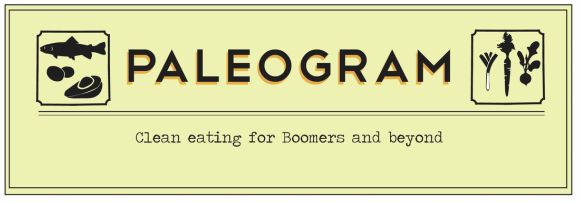
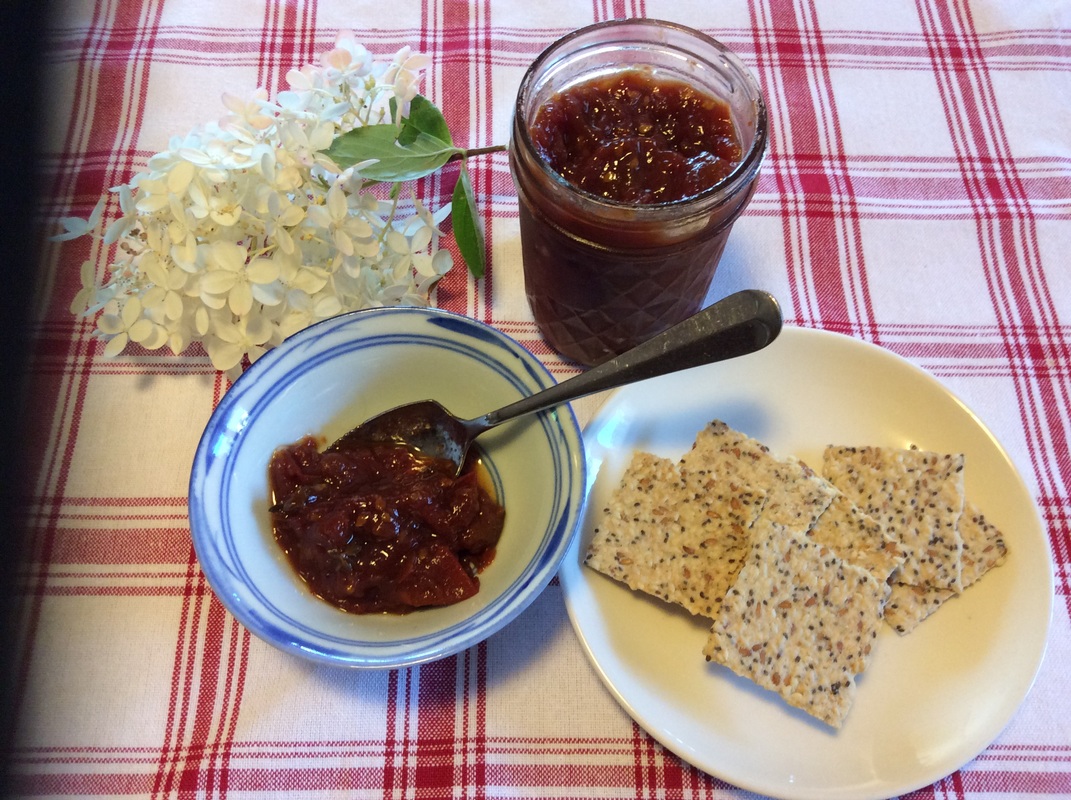
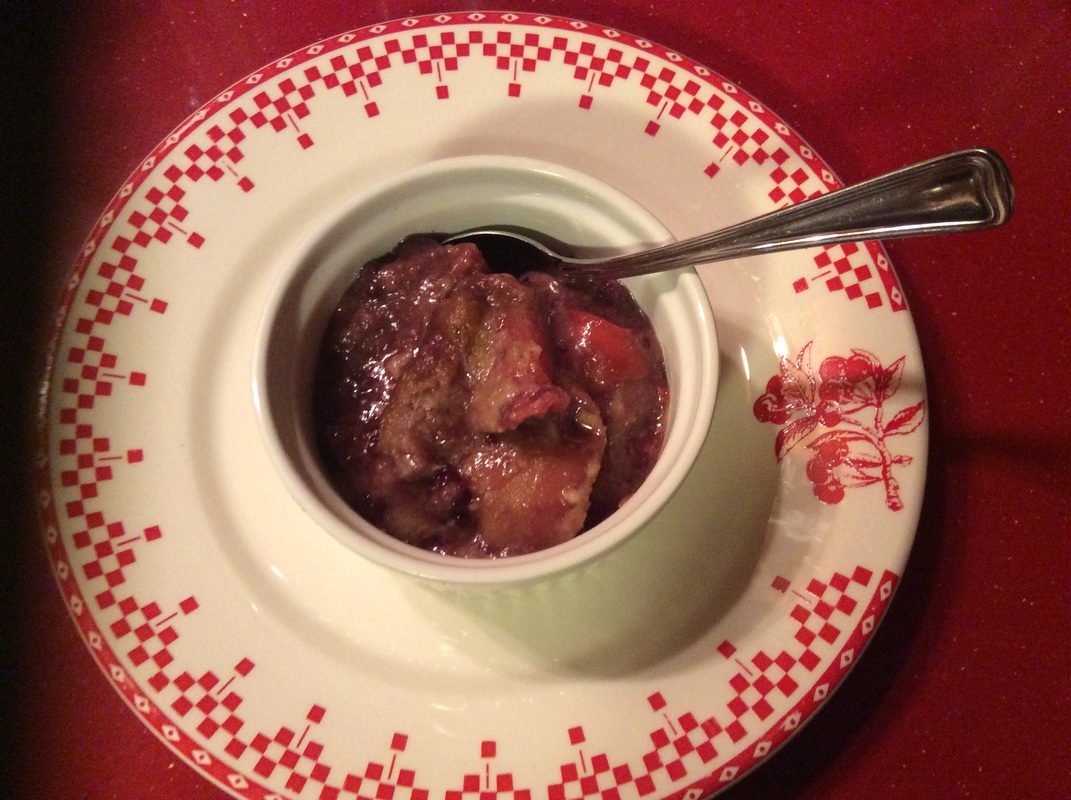

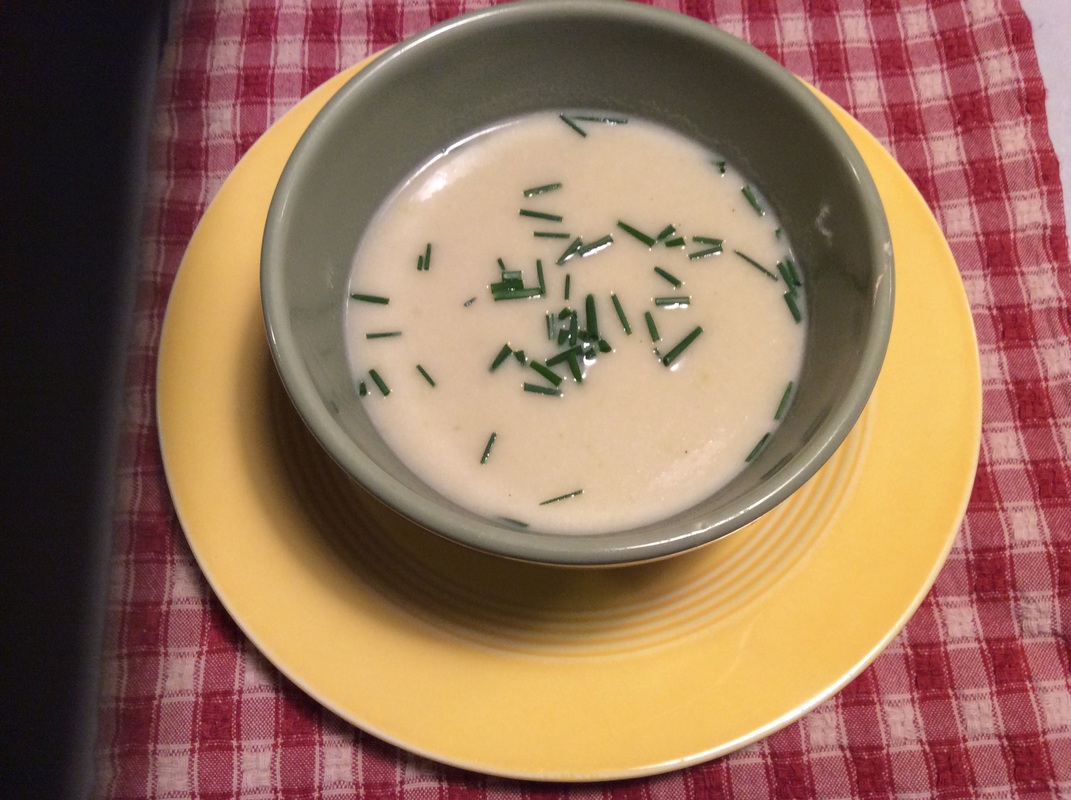
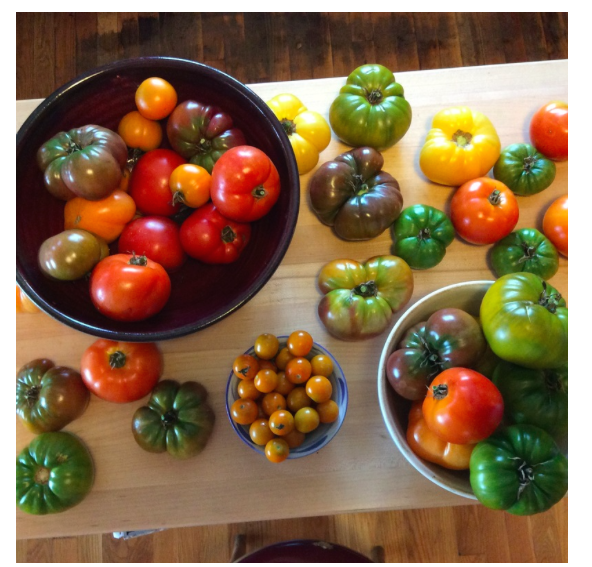
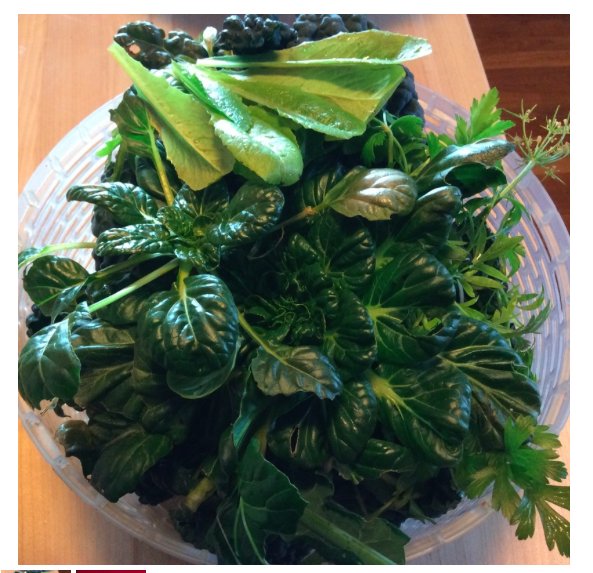

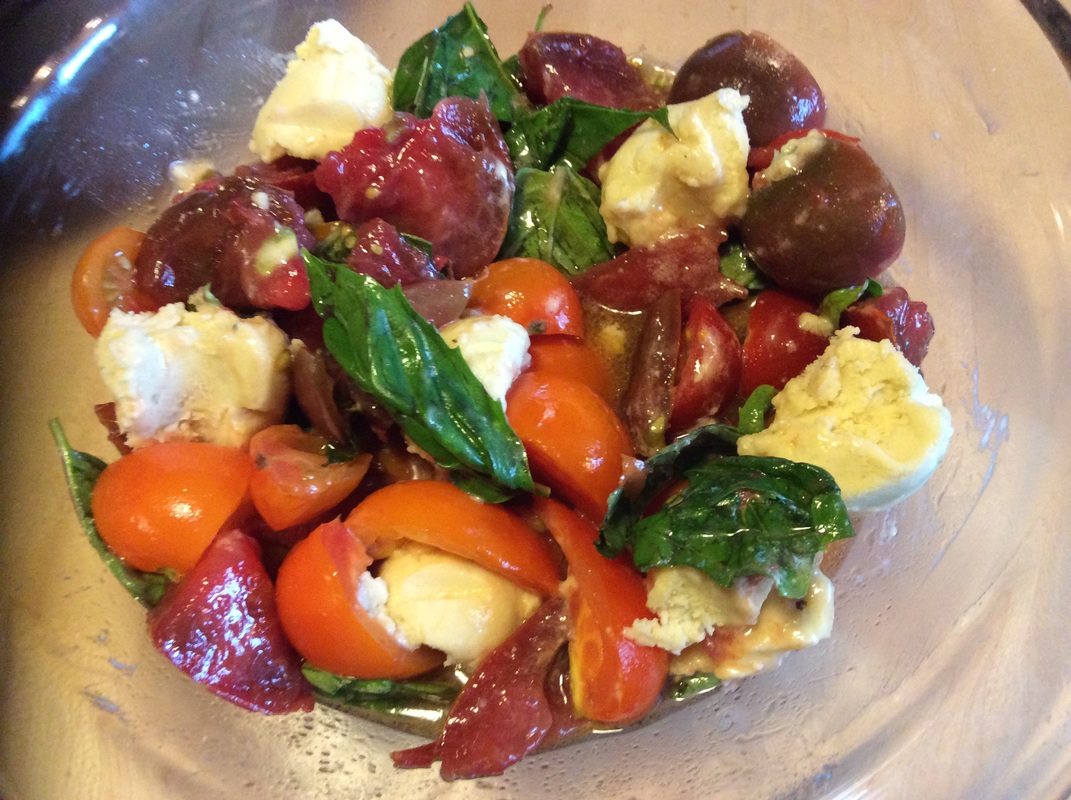
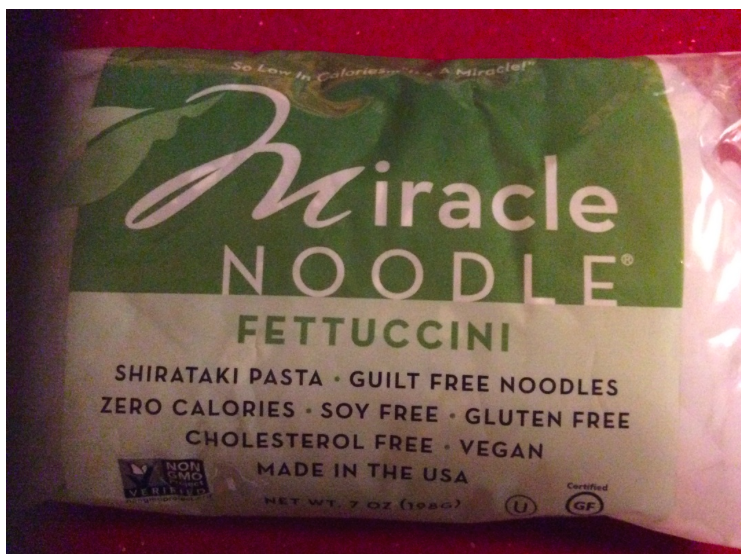
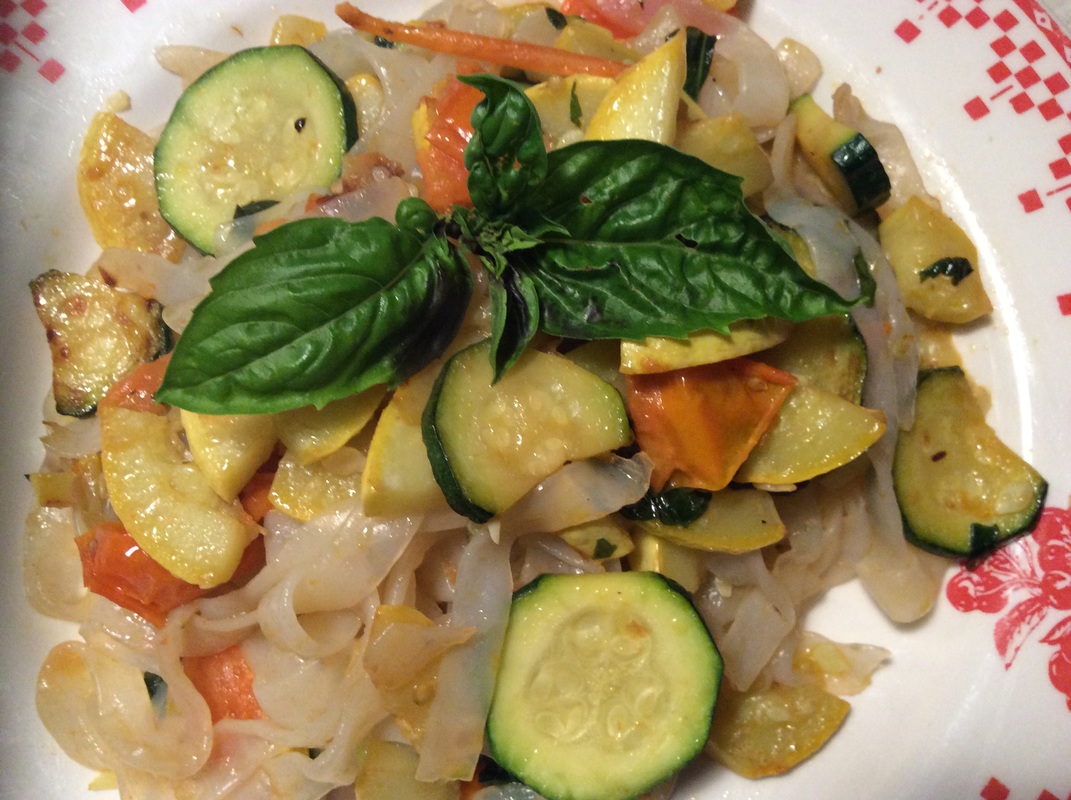
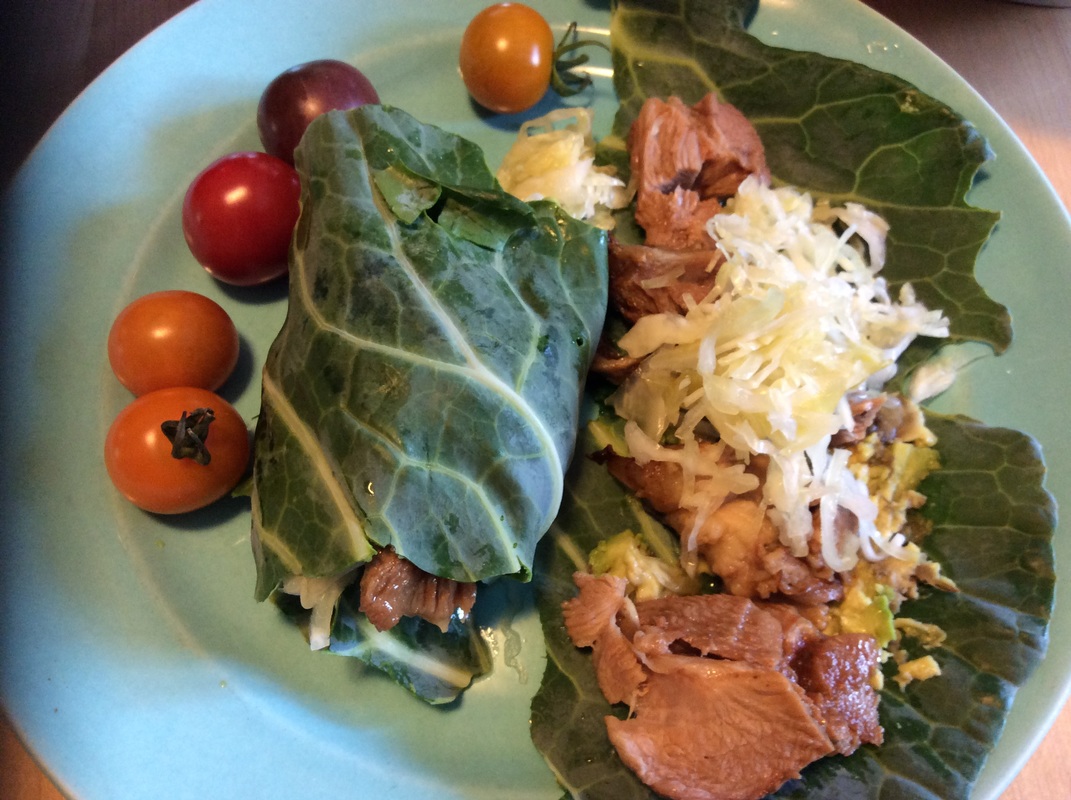


 RSS Feed
RSS Feed